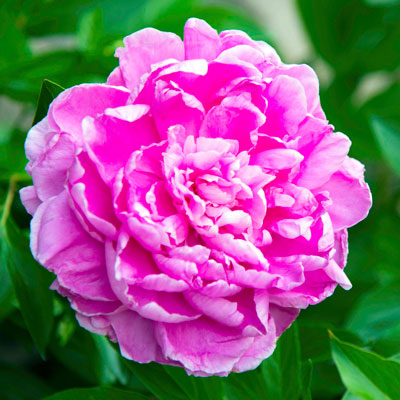Question of the Week #2: January 26, 2017
“Neil. Why is it that we can’t grow rhubarb, lilacs, peonies and cherries well here in Texas? They were some of our favorites up North.”
This is a composite question made up of four I hear all the time. The answers vary slightly, but they share a common thread: all of these plants prefer cooler summers and colder winters. That’s why you see them growing well in the Upper Midwest and clear into Canada.
But you check the extreme temperature records, and you see that those areas can get as hot as we do in Texas. Yes, but the telling fact is that they get there on very rare occasions. We go up near or above 100 F for 90 or 100 days (or more) every summer. The plants use up their stored food reserves more rapidly than they can replenish them. In banking terms, they’re putting in $10, but they’re withdrawing $12. When that’s done day after day, the funds are depleted. (Sounds like my account after Christmas!)
• Rhubarb may be the most challenging of the four. Except for gardens in the Davis Mountains and colder parts of the Panhandle, it just doesn’t cope well with Texas. I have never seen a thriving planting of rhubarb (2 years old or older) in my years in Texas. I helped harvest an acre of it while I was in school at Ohio State, so I know what it should look like.
• Lilacs will grow in Texas. I can start a small revolution by telling my fellow Texans that true lilacs won’t grow here. And then I have to go through a discussion of how I know that they survive and bloom (extremely poorly) from I-30 northward.
I’ve lived in Ohio, and I’ve traveled to Minnesota and the Pacific Northwest when lilacs were blooming. Their flower heads are bigger than basketballs! Ours in Texas struggle to beat golf balls. And the plants in the North may be 20 feet tall, healthy and vigorous. Ours struggle to grow to 3 to 4 feet, and they always look tired.
So, rather than get into arguments about whether lilacs will grow here in Texas, I’ve taken the position of letting those folks win by saying, “Yes, they will be alive and they will produce blooms. But you’re going to be really frustrated. There are many better alternatives.”
• Peonies are probably the most promising of these four plants. Once again, I-30 seems to be the drop-off ledge south of which they just won’t grow. My mom and dad grew up in Nebraska, and living in College Station, they’d tell me each spring that they really missed their peonies.
Research will probably find us some varieties of peonies that will bloom reliably year after year. My wife and I live in McKinney, and older neighborhoods and a large local cemetery have peonies that are almost never irrigated or fertilized. Yet they bloom every spring. But peony flowers are huge and floppy, and all you need is a rainy, windy day while they’re in bloom and your long wait will be wasted.
If you want to try one of these four plants, peonies might be your best option, but limit the numbers you plant. They’re expensive, and you may not like the results.
• Cherries. I’ll never forget the cherry pie stands along US Highway 34 leading from Loveland, Colorado, up to Estes Park. When I was a kid, our family hit them on two different trips. Those are bigger-than-life memories.
The sour cherry variety Montmorency has a chance of producing in the colder parts of North Texas and in the Davis Mountains of West Texas. My dad founded the biology department at Sul Ross University in Alpine during the Depression, and I heard him describe the commercial cherry orchards up in the mountains. But for the rest of us flatlanders, cherries aren’t going to be our star performers. Not even in the Top 10,000. Buy them at the store. It’s a lot less frustrating.

